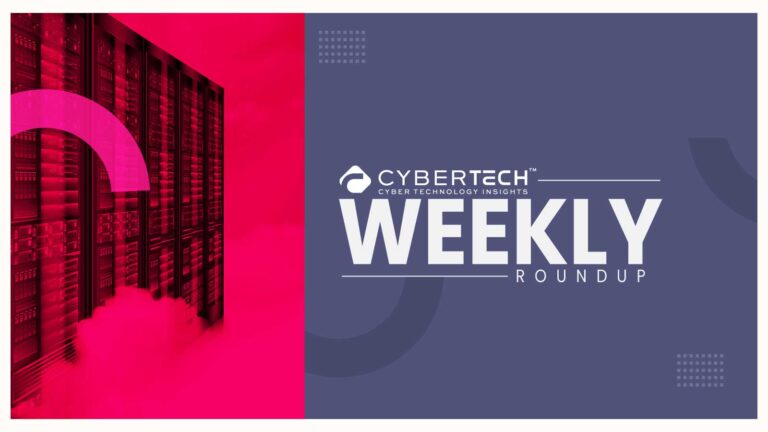Picture yourself on a rollercoaster that has no operator or experience. Quite ironically, this is how many organizations in the Asia-Pacific (APAC) market are planning for AI adoption today: feeling excitement because of the prospects, but seemingly just going with the flow. In APAC, risk leaders are making themselves heard: there has been a rapid-fire investment in artificial intelligence, but preparedness, simply, is nowhere close. This paper discusses why that is important, what evidence shows, and what actions professionals in APAC can now take.
What You Will Learn:
- The considerable disconnect between organizations’ AI investment and their AI risk readiness in APAC
- The evolution of generative AI and deepfakes towards a potential phase for emergent threats
- How trust, governance, data maturity, and talent impact resilience
- Concrete actions taken to instill confidence – and a responsible AI ecosystem
Recognizing the Divide: Aspiration Unwedded from Assurance APAC AI Investment Explosion
Nearly 87% of APAC business leaders want to ramp up investments in AI in 2025. Generative AI adoption has progressed, but less than half of firms expect to use generative AI broadly across their business units.
A Pitiful State of Readiness. A shocking only 1% of APAC firms feel fully confident in their organisation’s ability to implement responsible AI at scale.
Globally, only 90% of organisations feel ready to protect their AI-augmented systems at a level of effectiveness, while only about 10% are in Accenture’s so-called “Reinvention Ready Zone.”
Risk Leaders Sounded the Alarm. Aon’s 2025 Cyber Risk Report (May 2023) reported a 29% year-over-year growth of AI-enabled cyber risk incidents and a whopping 134% incident growth rate in four years.
Aon found risk officers are candid: 98% said they feel “somewhat” or “ot ready” or emerging AI threats.
Emerging Threats in Simple Terms
Deepfakes, Synthetic Fraud & Social Engineering
Machine-generated audio, images, and identity theft are no longer science fiction but are concerns today. Aon tells us that deepfakes are responsible for a 53% increase in social engineering attacks, and fraud-related cyber insurance claims are up 233% year-on-year.
Shadow AI and Surprise Tools
When employees use AI tools outside the purview of their organizations, organizations lack visibility and have oversight challenges. One survey reported that 81% of firms in Singapore had workers using generative AI, but less than half have any oversight tools or training in place.
Infrastructure and Governance Gaps
Even well-resourced industries, such as finance in Thailand, face challenges in AI adoption when legacy systems prevent integration, and homespun data estates,half-governancee, and non-cloud-supported infrastructure undermine security foundations.
How Trust and Governance Make the Difference in APAC
Trust Enables Adoption
Deloitte found that fewer than 10% of organizations have appropriate governance governing fairness, bias, and transparency; however, companies with strong AI governance have a reported 28% higher staff adoption and approximately 5% higher revenues.
Responsible AI Maturity Leads the Way
Enterprise organizations in India rank globally first in Responsible AI (RAI) maturity, according to a recent McKinsey survey, showing that risk awareness can go hand in hand with innovation and growth.
An additional academic study describes a maturity model to help corporations measure their improvement in control, accountability, and monitoring across AI systems.
Real-World Anecdote: A CFO’s Warning in APAC
Recently, at a roundtable, a CFO of a regional bank echoed an astute observation: “We introduced AI-based credit-scoring products with all kinds of enthusiasm, but our claims costs escalated faster than our ROI. The invisible risks began to catch up with visible benefits.” That real-world vignette illustrated the divergence between optimism and preparedness.
You have no doubt heard variations of similar stories – leaders bringing in data scientists, only to say: “Oh, we still can’t figure out what all the AI stuff we’re carrying around is doing.” Ironically, it is not falling prey to caution but rather unwarranted confidence in builds and launches that lead to threats.
Building Bridges: Four Focus Areas for Immediate Action
1. Governance & Trust policies
Establish policies around fairness, transparency, use of data, and human oversight.
Scale governance frameworks accordingly to automation risk
2. Inventory & Visibility
Maintain a formal inventory of all of the AI tools—approved or unapproved that you use.
Monitor Shadow AI use and enforce tracking tools to help eliminate blind spots.
3. Skilling & Culture
Upskill both executives and operations teams. Only 58% of L&D leaders identify skill gaps and delays in AI adoption as their issues in India and Southern Asia.
Create a culture where risk managers become risk-aware innovators.
4. Technical Foundation
Adapt legacy systems and data estates to support AI-native infrastructures.
Enable secure cloud, data lineage, and pipelines with encryption, access controls, and auditability—only 25% of orgs have these in place fully.
Humanizing Examples & Rhetorical Reflection of APAC
Have you ever received a phishing call that mimicked your Boss’s voice? That’s Social engineering with AI.
Or how about when you think, “Governance, it’s just paperwork, right?” Not- it is your runway to providing a safe takeoff for AI.
Think of the group as pilots- they cannot fly if they don’t understand what the cockpit dashboards mean. Not doing any training is the same as flying blind.
A fun way to think about this: Think of your AI like a high-performance sports car- it’s cool until you realize you forgot brakes.
Mapping the Future: From Awareness to Action
There is emerging cyber maturity in many APAC companies – Aon’s CyberQuotient risk scores rose by nearly 16% in the past twelve months.
However, most remain in the “Exposed Zone.” There is no luxury of taking our time; it’s time to act.
Greater preparedness will not only lead to small reductions in risk, but it will also maintain trust, credibility, and long‑term value. All the enthusiastic CIOs and CISOs I have spoken to have consistently confirmed the same thing – it pays to be proactive. Organizations that see cybersecurity and AI risk as enablers, rather than barriers, can find true competitive advantage.
Conclusion
It’s only natural to consider what AI can do for us – new products, faster decisions, greater personalization at scale – but taking our eye off the risks is tantamount to building a skyscraper without a foundation. Risk leaders across APAC are raising the alarm; the technological threats associated with AI are evolving faster than innovation can keep up with, and without trust, a supportive governance framework, skilled personnel, and modern data infrastructure, we bury our heads in the sand.
Key Takeaways:
- AI investment is booming in the APAC region, yet the readiness is still substantially lacking.
- Increased AI-based fraud, deepfakes, nd shadow AI are emerging threats today.
- Governance creates trust, trust enables transparency, and transparency allows adoption.
- The most urgent action is to build visibility, build modern infrastructure, and up-skill teams.
FAQs
Q1: What AI-enabled risks are present in APAC presently?
AI-enabled risks include deepfake fraud, voice impersonation using synthetic voice, unconsented (shadow) AI tools, and social engineering campaigns enabled by generative AI.
Q2: If APAC organizations are investing so heavily in AI, why are their people and processes still behind the pack?
Organizations are lacking governance frameworks, an inventory of AI tools, controlled data pipelines, and are without trained teams. Many organizations have lots of ambition, but no infrastructure, no governance, and no policy frameworks.
Q3: How can organizations make progress in closing the AI risk gap?
Organizations can get moving by creating an ordered inventory of AI, establishing governance frameworks related to the level of risk, improving data infrastructure, and upskilling their people.
Q4: What is the importance of trust in enabling organizations to deploy AI use cases effectively?
Trust is fundamental to adoption: governance frameworks that are fair, transparent, and responsive will enhance employee and customer trust, and will unlock more uses of AI and also greater ROI.
Q5: Is AI readiness merely a tech issue or a people/culture one, too?
It is both: technical systems matter, but readiness will be shallow without a culture of responsible AI, appropriate governance, and ethical use of AI.
For deeper insights on agentic AI governance, identity controls, and real‑world breach data, visit Cyber Tech Insights.
To participate in upcoming interviews, please reach out to our CyberTech Media Room at sudipto@intentamplify.com.







